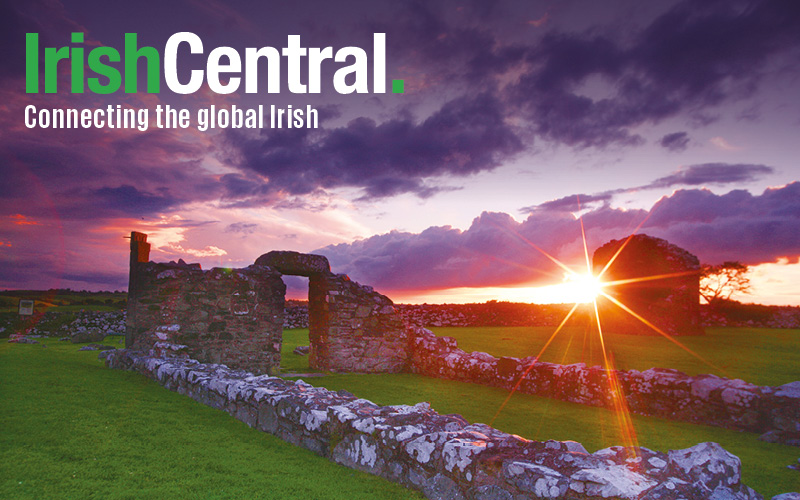Irish scientists are looking back hundreds of thousands of years to Ireland’s last ice age in order to better understand the climate changes happening within the country today. Their research has also helped determine why Ireland’s topography is the way it is, according to the Irish Times.
Research is focusing on analyzing the continental seabeds not only off the coast of Ireland, but as far away as Antarctica in order to piece together the creation of Ireland’s varied topography, and provide clues into climate shifts.
Dr. Paul Dunlop, head of the Quaternary Environmental Change Research Group at the University of Ulster, Coleraine, and his team have been studying the period of the past 120,000 years, the timeframe of when the last ice age came and went.
In particular, that period featured a kilometer-deep ice sheet that blanketing Ireland during that when analyzed, can unlock some of the secrets to the climate changes - including temperatures and timing of the shifts.
“The Quaternary [the period the team is studying] is characterised by climate change, and this caused changes in the ice sheets,” says Dunlop.
Not surprisingly, Dr. Dunlop and his team were faced with no easy feat. “The problem with the ice sheets is they are so destructive they destroy all the evidence of past glaciations. It is very difficult to get information on previous ice sheets. The deeper you go back in geological time the more vague it becomes.”
Dr. Dunlop was working out of NUI Galway when an ambitious project to map the seabed was underway. The program set out to map all of Ireland’s extensive continental shelf out to the edge of the deep Atlantic waters and beyond.
Dr. Dunlop said that “The big unknown question was: how far out did the ice sheet extend?” Through their research, the team was able to determine that the sheet extended for many kilometers, and in some cases, out to the edge of the continental shelf.
“The most striking features we see are the ridges, 10 km long. We have definitely mapped the western extent of the ice sheet.” One of the biggest ridges found was 14m high, 125km long and 11km wide.
“There are also features gouged into the seabed, icebergs ploughing up the sea floor.”
One trend the scientists noticed was that the ridges are seen closer and closer to the coastline, retreating as the climate warmed and the ice began to melt.
“This gives us a nice high-resolution data set on climate change. It shows you what the footprint was as it retreated and how rapidly it retreated,” Dr. Dunlop said.
By conducting radiocarbon dating on the species that would have occupied the cold-water that was advanced when the ice retreated, Dr. Dunlop was able to provide a date for the furthest extent of the ice, placing it between 29,000 and 27,000 years ago.
Similarly, cosmogenic radionuclide dating can also be used to track the land-based retreat of the ice.
Dr Robert Meehan, a consultant geologist and expert on the impact of the ice on Ireland’s topography, says the research that has been gathered is invaluable to understand the climate change that triggers ice ages.
Ireland was literally formed by glaciers as successive ice ages sent wave after wave of glaciers that scored and scoured the surface, leaving behind drumlins and the Burren, not to mention trillions of tons of gravelly waste.
With the current “interglacial” or warm period already having lasted around 10,000 years, the next ice age could be ‘just around the corner,’ to which Dr. Meehan said “This is where the arguments about climate change become interesting.”
Some people argue that the climate change the Earth is experiencing today is part of its natural cycle, while others argue that it is a result of human activity.
Dr. Meehan, who has been studying Ice ages for twenty five ages, has compiled comprehensive maps of glacial sediment left behind in Ireland. Currently, he’s working the first digital glacial sediment and landform maps for the Geological Survey of Ireland.
During the peak of the last ice age, approximately 29,000 years ago, Ireland would have appeared multiple its size as it was laying under up to a kilometer of ice.
Meehan’s studies have shown that only 107sq km of Ireland’s 85,000sq km land mass remained above the ice sheet that blanketed the country. The island and all points north “were completely smothered”, he says.
The eventual movement of the ice sheet helped shape and carve Ireland’s present landscape.
“Once the depth of ice reaches 50m it starts to flow. All of the ice was flowing, it was scouring the landscape.” Dr. Meehan added that the results of the ice flow are visible today in places such as Glendalough in Co Wicklow.
Similarly, peat bogs are where glacial lakes were such a long time ago.
Some wonder why more of Ireland isn’t like the Burren, raw rock that is the result of the scouring movement of the ice. Dr. Meehan explained that only 10 per cent of Ireland is rock outcrop, while “the rest is buried by deep glacial sediments.”
And buried it is, indeed. The present day Curragh in Co Kildare sits atop 110m of sediment, gravel and sand before reaching bedrock. Some of the deepest sedimentary deposits up to 125m thick overlay Offaly, Laois and south Kildare, he says. “There are trillions of tons of sediment.”




Comments